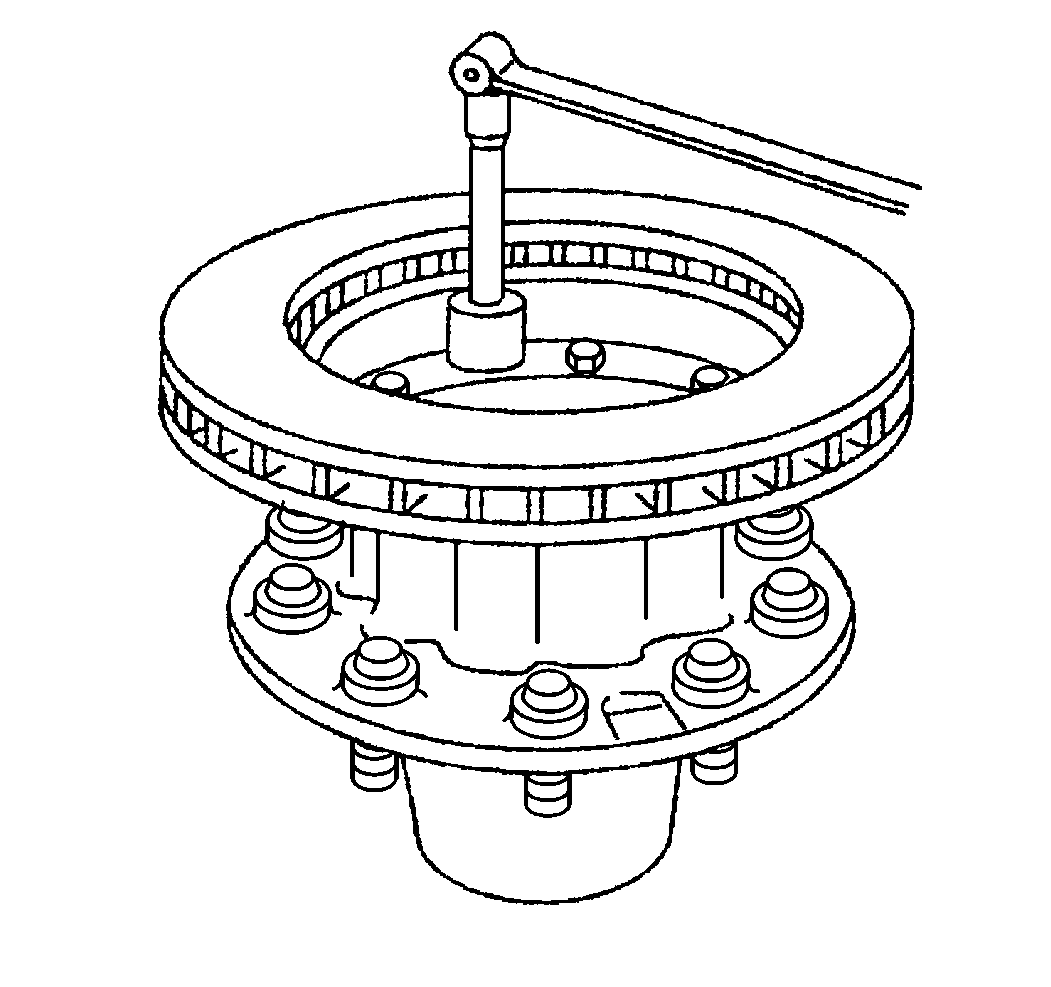Removal Procedure
- Block the wheels.
- Apply the parking brake.
- Raise the vehicle. Refer to Lifting and Jacking the Vehicle in General Information.
- Remove the tire and wheel. Refer to Tire and Wheel Removal and Installation in Tires and Wheels.
- Remove the brake caliper. Refer to Rear Brake Caliper Replacement .
- Do not remove the brake line from the caliper.
- Remove the brake rotor (with the hub, or with the wheel). Refer to Rear Axle Hub, Bearing, Cup, and/or Seal Replacement .
- Remove the bolts that mount the front brake rotor to the hub, or the wheel.
- Remove the brake rotor from the hub, or the wheel.
Notice: Support the brake caliper with heavy mechanic wire, or equivalent, whenever it is separated from its mount and the hydraulic flexible brake hose is still connected. Failure to support the caliper in this manner will cause the flexible brake hose to bear the weight of the caliper, which may cause damage to the brake hose and in turn may cause a brake fluid leak.

Installation Procedure
- Install the brake rotor to the hub, or the wheel.
- Install the bolts that mount the brake rotor to the hub, or the wheel.
- Apply 272 Threadlock GM P/N 12345493, or equivalent, to the threads of each brake rotor bolt.
- Install the brake rotor (with the hub, or with the wheel). Refer to Front Wheel Hub, Bearing, and Seal Replacement .
- Clean both sides of the brake rotor with Brake Parts Cleaner GM P/N 12345754 or equivalent.
- Install the brake caliper. Refer to Rear Brake Caliper Replacement .
- Install the tire and wheel. Refer to Tire and Wheel Removal and Installation in Tires and Wheels.
- Lower the vehicle. Refer to Rear Axle Hub, Bearing, Cup, and/or Seal Replacement .
- Pump the brake pedal several times in order to ensure the pedal is firm and the brake pads are adjusted.
- Remove the wheel blocks.
Notice: Any new rotor must have the protective coating removed from the friction surfaces before being placed in service. Remove the protective coating using denatured alcohol or an equivalent brake cleaner, and wipe the surface clean with clean cloths. Do not use gasoline, kerosene, or other oil base solvents which may leave an oily residue. This residue is damaging to the brake lining and is flammable.

Notice: Use the correct fastener in the correct location. Replacement fasteners must be the correct part number for that application. Fasteners requiring replacement or fasteners requiring the use of thread locking compound or sealant are identified in the service procedure. Do not use paints, lubricants, or corrosion inhibitors on fasteners or fastener joint surfaces unless specified. These coatings affect fastener torque and joint clamping force and may damage the fastener. Use the correct tightening sequence and specifications when installing fasteners in order to avoid damage to parts and systems.
Tighten
| • | Tighten the brake rotor bolts, 9/16 in OD-10 bolt pattern, to 152 N·m (112 lb ft). |
| • | Tighten the brake rotor bolts, 5/8 in OD-5 bolt pattern, to 256 N·m (189 lb ft). |
Important: Ensure that the threads are clean and greaseless before applying the threadlock.
Important: Check the level of the brake fluid in the master cylinder reservoir after pumping the brake pedal.
